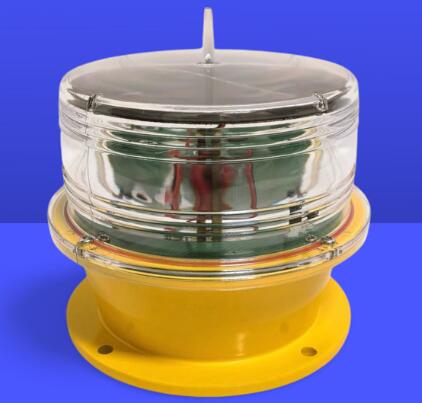Solar Aviation Obstruction Light: The Future of Eco-Friendly Airspace Safety
In an era of increasing environmental awareness and energy efficiency, solar aviation obstruction light systems are emerging as a sustainable solution for marking tall structures. These innovative lighting systems combine renewable energy technology with critical aviation safety requirements, offering reliable performance while reducing carbon footprints. This article explores the advantages, working principles, applications, and technological developments of solar aviation obstruction light systems that are revolutionizing how we protect aircraft from ground-based obstacles.
Why Solar-Powered Solutions Matter
Solar aviation obstruction light systems address several critical challenges in modern aviation safety:
Energy Independence: Operate without grid connections in remote locations
Environmental Sustainability: Reduce reliance on fossil fuel-generated electricity

Cost Efficiency: Lower long-term operational expenses
Reliability: Continue functioning during power outages
These benefits make solar-powered systems particularly valuable for marking:
| solar aviation obstruction light |
Communication towers in rural areas
Wind farms and offshore installations
Remote infrastructure projects
Temporary construction sites
| solar aviation obstruction lights |
Core Components and Working Principle
A typical solar aviation obstruction light system consists of:
High-Efficiency Solar Panels: Convert sunlight into electrical energy
Intelligent Charge Controller: Regulates power flow and prevents overcharging
High-Capacity Batteries: Store energy for nighttime and cloudy day operation
LED Light Fixtures: Provide high-intensity, low-power illumination
Weatherproof Enclosure: Protects components in harsh environments
The system operates through a continuous cycle of energy collection during daylight and controlled discharge during darkness, with most modern units capable of operating for 5-7 days without sunlight.
Types of Solar Aviation Obstruction Lights
1. Low-Intensity Solar Lights
Ideal for structures under 45 meters
Typically red LED lights with steady or flashing patterns
Common on rural communication towers and small wind turbines
2. Medium-Intensity Solar Systems
For structures between 45-150 meters
Combine red and white LED technologies
Often feature dual-day/night operation modes
3. High-Intensity Solar Solutions
Designed for very tall structures exceeding 150 meters
Incorporate advanced optical systems for maximum visibility
May include synchronization capabilities for multiple units
Technological Advancements
Recent innovations in solar aviation obstruction light technology include:
Smart Energy Management:
Adaptive brightness control based on battery levels
Automatic power conservation during extended low-light periods
Advanced Monitoring Systems:
Wireless status reporting via cellular or satellite networks
Remote configuration and diagnostics capabilities
Improved Durability:
Corrosion-resistant materials for coastal installations
Extreme temperature operation (-40°C to +70°C)
Hybrid Solutions:
Wind-solar combination systems for maximum reliability
Backup generator interfaces for critical installations
Regulatory Compliance and Standards
Solar aviation obstruction light systems must meet the same stringent requirements as conventional systems:
FAA AC 150/5345-43H specifications in the United States
ICAO Annex 14 standards for international compliance
EASA regulations for European operations
Local aviation authority requirements
Manufacturers achieve compliance through:
Certified light intensity and color characteristics
Rigorous environmental testing
Documentation of performance under various conditions
Installation and Maintenance Considerations
Best practices for solar aviation obstruction light systems include:
Optimal Panel Placement:
Unobstructed southern exposure (northern hemisphere)
Proper tilt angle for maximum solar collection
Battery Maintenance:
Regular performance checks
Proper ventilation and temperature control
System Monitoring:
Scheduled performance verification
Immediate attention to fault indicators
Cleaning Protocols:
Regular panel cleaning for maximum efficiency
Lens maintenance for optimal light output
Future Trends and Developments
The solar aviation obstruction light industry is evolving with:
Integrated IoT Solutions:
Real-time performance monitoring via cloud platforms
Predictive maintenance algorithms
Improved Energy Storage:
Next-generation battery technologies
Supercapacitor applications
Enhanced Visibility Systems:
Adaptive lighting patterns based on aircraft proximity
Radar-enhanced identification capabilities
Sustainable Materials:
Recyclable component designs
Reduced rare earth material usage
Solar aviation obstruction light systems represent the perfect marriage of environmental responsibility and aviation safety requirements. As technology continues to improve in both solar efficiency and lighting performance, these systems are becoming the preferred choice for marking obstacles in all environments - from remote mountain tops to urban skyscrapers. The aviation industry's adoption of solar-powered solutions demonstrates a commitment to sustainable safety measures that protect both aircraft and our planet.
